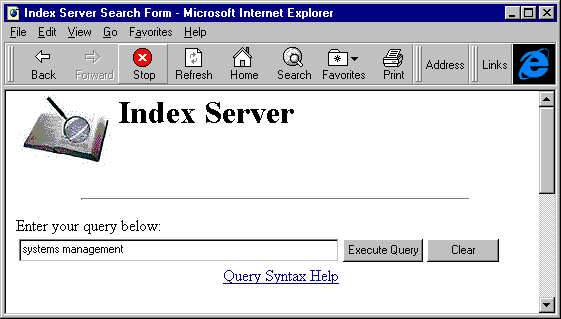In the past, HTML Extensions (HTX) played a pivotal role in web server functionality, particularly with Microsoft Index Server and the Internet Database Connector (IDC). HTX files, recognized by their .htx extension, were templates that structured how search results from a database query were presented on web pages. They worked in conjunction with Internet Data Query (IDQ) files to serve dynamic content to users.
However, as web technologies have evolved, the use of HTX files and the systems they supported have been superseded by more advanced and integrated solutions. Today’s web applications often rely on server-side scripting languages like PHP, ASP.NET, or JavaScript frameworks in combination with modern databases, which provide a more seamless and interactive user experience.
In this article:
- What was the HTML Extension (HTX)?
- From HTX to Modern Web Development
- Why HTX Became Obsolete
- Contemporary Alternatives
- Conclusion

1. What was the HTML Extension (HTX)?
HTX, which stands for HTML Extension, was a text file with the extension .htx used by Microsoft Index Server (Indexing Service in Windows 2000). An HTML Extension (HTX) file is used to format the result set issued by Index Server in response to a catalog search query. These catalog search queries are issued using an Internet Data Query (IDQ) file. HTX files are also used by the Internet Database Connector (IDC) to format the result set of a database query.
The .htx file formats the result set of a query into a Hypertext Markup Language (HTML) page that the user who issued the query can read and understand. The .htx file acts as a template for formatting the result set and consists of HTML statements with additional tags and specific read-only variables such as
- CiMatchedRecordCount, which contains the number of records that match the query
- CiRecordsPerPage, which indicates the number of records on the next page
- CiContainsFirstRecord, which is 1 if the page contains the first record of query results and 0 otherwise
2. From HTX to Modern Web Development
Modern web development practices have moved away from standalone files like HTX for formatting search results. Instead, server-side scripts are embedded within the web pages themselves or handled by server-side frameworks that dynamically generate the HTML content sent to the client’s web browser.
These scripts can interact with a wide array of database systems using standardized APIs. Search and query results are then styled using Cascading Style Sheets (CSS) and manipulated on the client-side using JavaScript for a more dynamic and responsive interface.
3. Why HTX Became Obsolete
The shift away from HTX files can be attributed to several factors:
- Integration of Server-Side Technologies: Frameworks like Node.js, Django, and Ruby on Rails offer an all-encompassing environment for web application development, reducing the need for separate files to handle data presentation.
- Advancements in Database Technology: Databases now offer more sophisticated querying capabilities, often with their built-in functions for generating JSON or other data formats that can be directly consumed by web applications.
- Client-Side Rendering: With the advent of AJAX and frameworks like Angular, React, and Vue.js, it’s become more efficient to handle data formatting and presentation in the browser, minimizing server load and network latency.
4. Contemporary Alternatives
While HTX files are a thing of the past, understanding their purpose enriches one’s comprehension of the evolution of web development. Developers now have numerous tools at their disposal, such as:
- Template Engines: Technologies like EJS, Pug, and Mustache provide powerful ways to embed dynamic content into HTML pages on the server side.
- API-Driven Development: RESTful APIs and GraphQL have become standard for querying data and serving it to web applications in a structured format.
- Modern Full-Stack Development: Full-stack frameworks provide a unified approach to both the front-end and back-end development, often incorporating their mechanisms for data retrieval and presentation.
5. Conclusion
While the HTX file and its associated technologies played an important role during the formative years of dynamic web content delivery, the principles behind it persist in the sophisticated web development methodologies of today. Understanding this lineage is crucial for professionals who wish to appreciate the full scope of web technology evolution.
6. References
- Flanagan, D. (2020). JavaScript: The Definitive Guide. O’Reilly Media. This comprehensive guide includes insights into how JavaScript has taken over tasks previously managed by HTX.
- Freeman, A. (2021). Pro ASP.NET Core 3. Apress. This book provides an understanding of ASP.NET Core, a modern alternative to HTX for dynamic web applications.
- Negrino, T., & Smith, D. (2017). JavaScript & jQuery: The Missing Manual. O’Reilly Media. This manual is a resource for understanding how client-side scripting has replaced many server-side templating tasks.
- Stearns, P. (2019). RESTful Web Clients. O’Reilly Media. This work discusses RESTful APIs, which are integral to the modern web development that has succeeded HTX.
- Duckett, J. (2014). HTML and CSS: Design and Build Websites. John Wiley & Sons. This book highlights the role of CSS and HTML in modern web design, which has absorbed the styling and formatting functions of HTX.